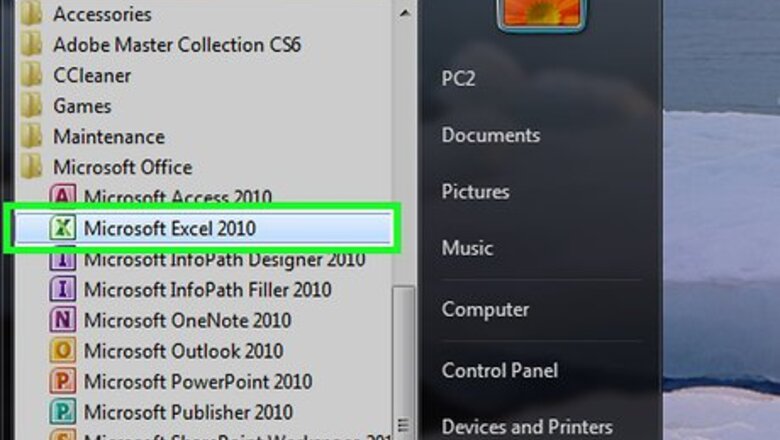
views
Building an Address List

Open Microsoft Excel on your PC or Mac. If you already have a spreadsheet containing the names and addresses for your labels, follow along with these steps to make sure it's set up in a format that works with Microsoft Word's address merging feature. In Windows, click the Start Windows Start menu, select All Apps, open Microsoft Office, then click Microsoft Excel. If you have a Mac, open the Launchpad, then click Microsoft Excel. It may be in a folder called Microsoft Office.
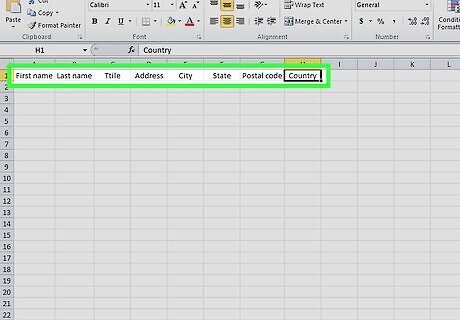
Enter field names for each column on the first row. The first row in the sheet must contain header for each type of data. For example, LastName, FirstName, Title, Address1, Address2, City, State, Postal Code, Country. Each of these headers would go into its own cell in Row 1. Each column header must be unique so there's no issues with the merge.
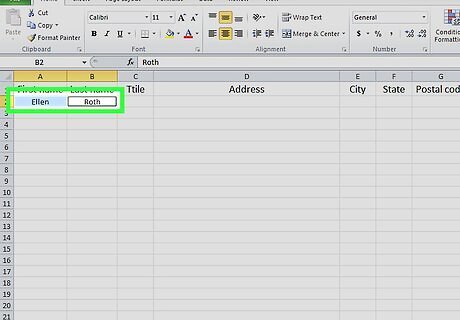
Enter the first person’s details onto the next row. Each row must contain the information for one person. For example, if you’re adding Ellen Roth as the first person in your address list, and you’re using the example column names above, type Roth into the first cell under LastName (A2), Ellen into the cell under FirstName (B2), her title in B3, the first part of her address in B4, the second (if there is one) in B4, etc.
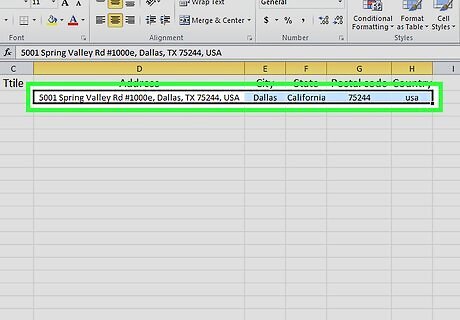
Continue entering names and addresses in this format. It’s important that each person’s information matches the column header. It’s okay to a cell blank (for example, if the person’s address does not need the “Address2” field), but there should be no entire blank rows in your data. There’s no need to use any special formatting, such as cell colors or special borders, in your data. Only the data in the cells will be used.
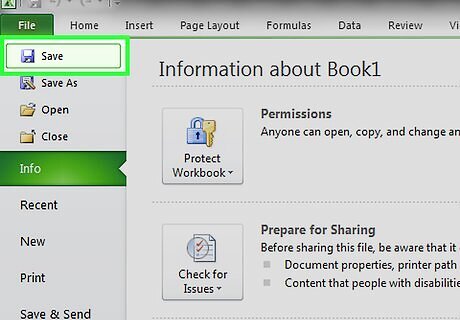
Save your sheet. After you’ve entered all of the addresses for your labels, you’ll need to save the file so it can be imported into Word. Click the File menu, select Save As, then type a name for your data. When you’re finished, click Save. Remember where you saved this file, as you'll need to be able to find it when it comes time to import it into Word.
Creating the Labels
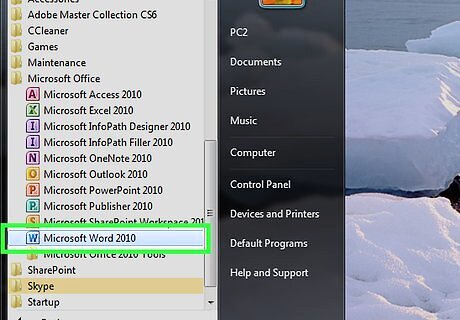
Open Microsoft Word on your PC or Mac. Now that you have an address list in a spreadsheet, you can import it into Microsoft Word to turn it into labels. In Windows, click the Start Windows Start menu, select All Apps, open Microsoft Office, then click Microsoft Word. In macOS, open the Launchpad, then click Microsoft Word. It may be in a folder called Microsoft Office.
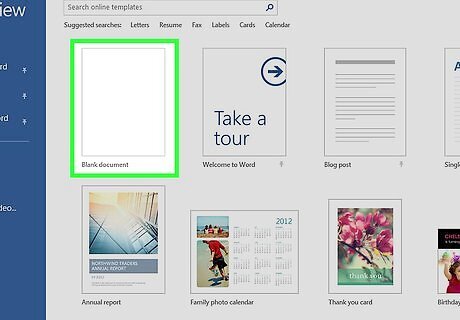
Click Blank document. This creates a new document to work in.
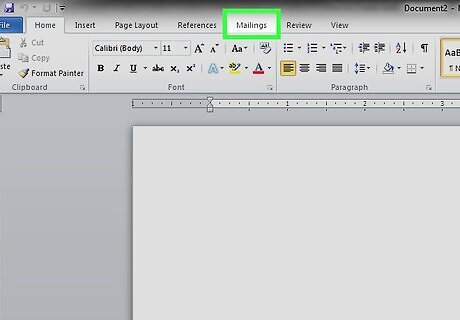
Click the Mailings menu. It’s at the top of the screen.
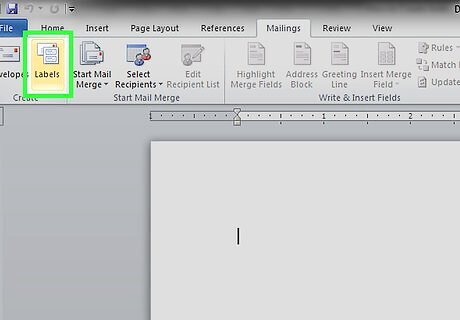
Click Labels. It’s in the ribbon bar at the top of the screen near the left edge.
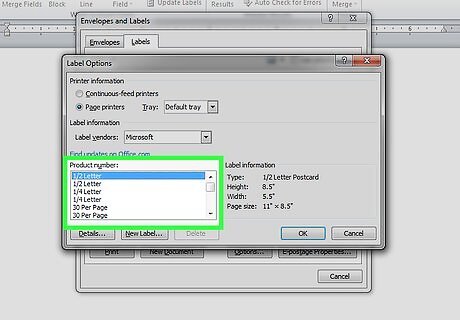
Select your label size and click OK. Be sure to select the size that matches the label paper in your printer. The most accurate way to do this is to select the company that made your label stickers from the “Label vendors” drop-down, then select the size or version listed on the label packaging.

Click Select Recipients. It’s an icon at the top of the screen containing a window with two overlapping blue and green people. A drop-down menu will appear.
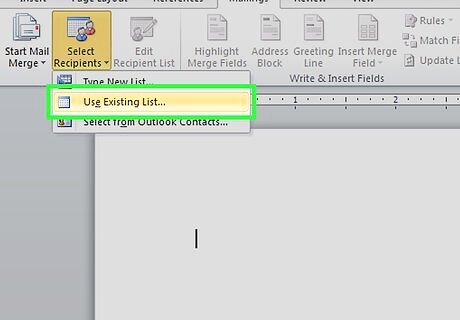
Click Use an existing list. Your computer’s file browser will appear.
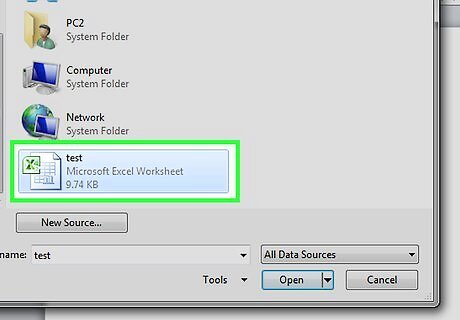
Select the spreadsheet that contains your addresses and click Open. If more than one sheet is in the workbook, click the sheet with the data in the pop-up box, then click OK.
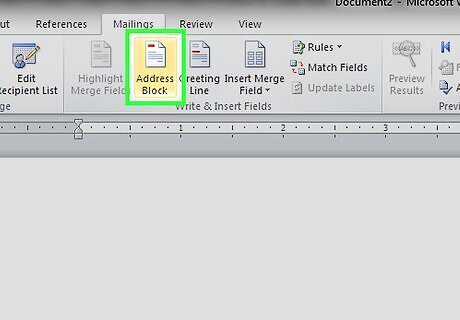
Click Address Block. It’s in the icon bar at the top of Word, near the center.
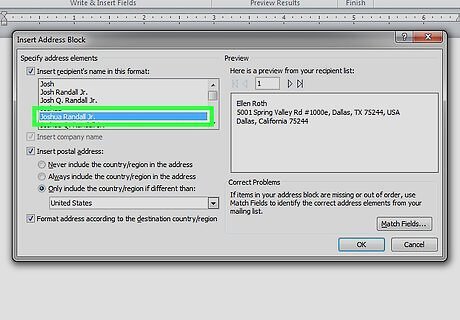
Select your desired name and address formatting. Select a format for the person's name in the first large box, then choose a format for addresses that your postal service can use. A preview will appear on the right side of the menu.
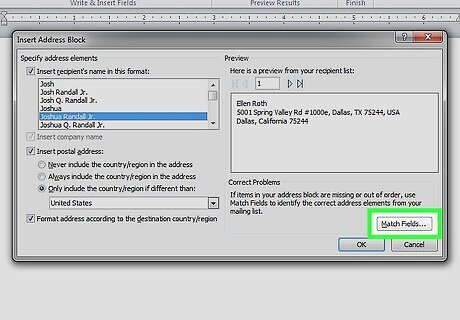
Click Match fields. It’s at the bottom-right corner of the preview. This opens a list of fields that appear in your spreadsheet.
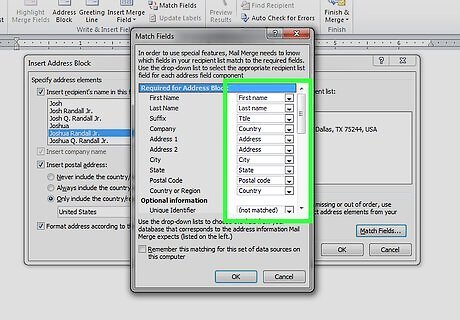
Match the fields to the data in the spreadsheet. Each option has its own drop-down menu—click the arrow to view the options, then select the data you want to appear in that part of the address block.
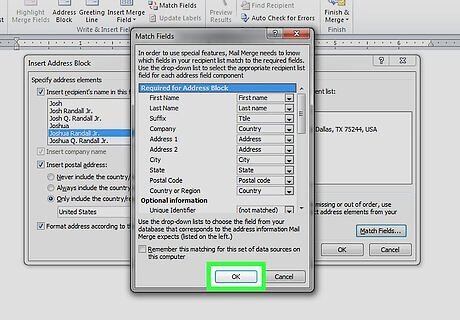
Click OK. This returns you to the Mail Merge page.

Click Update Labels. It’s near the middle of the icon bar in the “Write & Insert Fields” section. The page will refresh to show your address data in the label format.
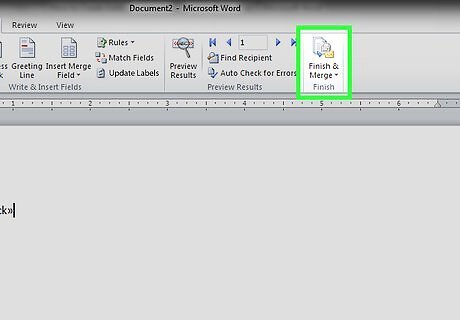
Click Finish & Merge. It’s the last icon on the icon bar at the top of Word. A few menu options will expand.
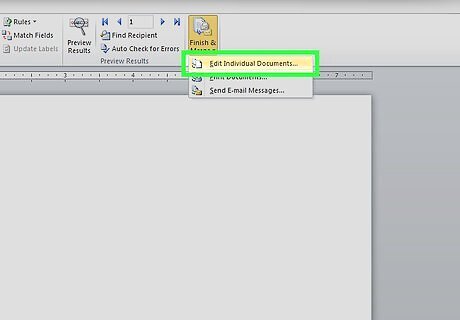
Click Edit Individual Documents…. A smaller dialog box will appear.
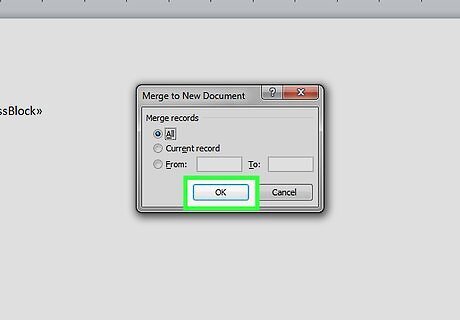
Select All and click OK. This closes the Mail Merge screen and returns you to the document (which now displays your labels).
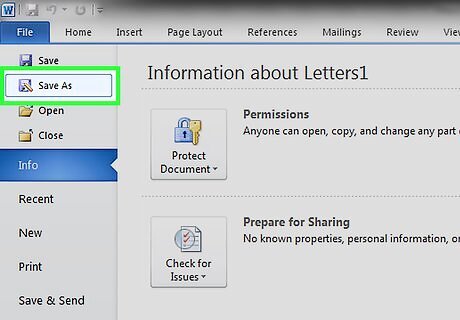
Save your labels. Now that they are all ready to go, click the File menu, select Save As, then type a name for your labels file. When you’re finished, click Save.
Printing the Labels
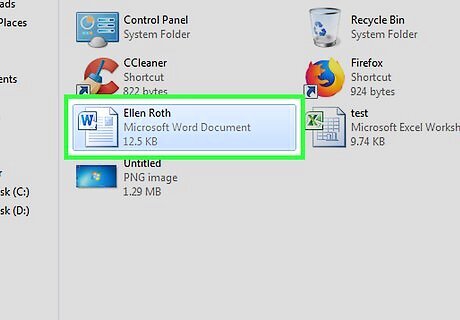
Open the label document in Word. If you’ve closed the Word document that contains your labels, re-open it by navigating to the folder where it’s saved, then double-clicking the file.
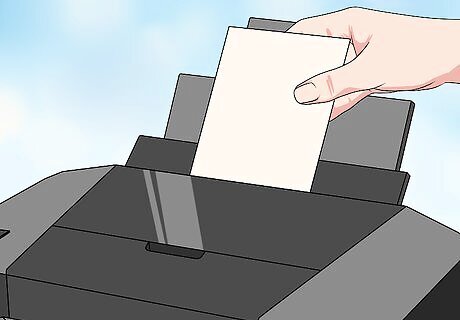
Insert the label paper into your printer. The steps to do this depend on your printer and the manufacturer of your label stickers.
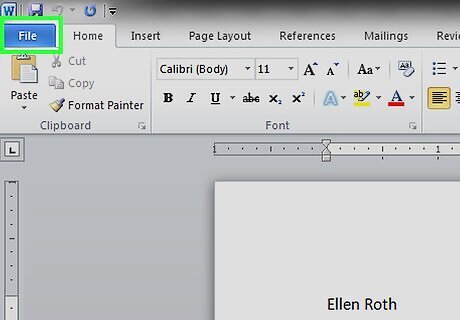
Click the File menu. It’s at the top-left corner of Word.
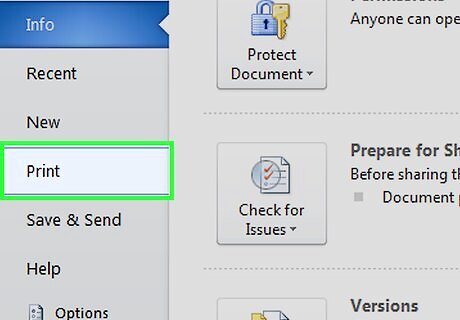
Click Print. It’s on the left side of the screen. This opens your computer’s printing dialog box, and a preview should appear. If you’re using macOS, you may have to check the box next to “Show Quick Preview” to see the preview.
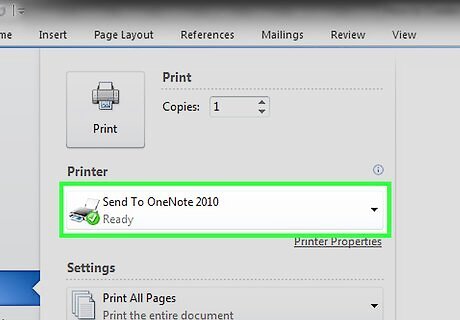
Select your printer. If the printer you’re using is not already listed under “Printer,” select it from the drop-down menu.

Disable two-sided printing. If printing from Word normally prints on both sides of the page, you’ll need to turn that off to print the labels. macOS: Click the drop-down menu that says “Copies & Pages,” then select Layout. Select Off from the “Two-sided” menu. Windows: Under “Settings,” make sure Print One Sided is selected.
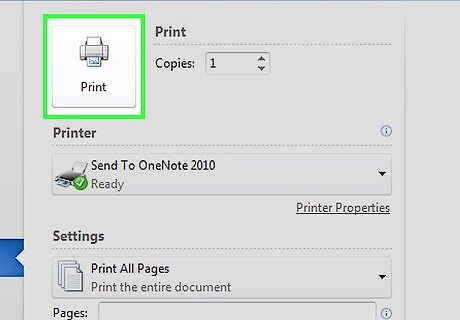
Click Print. This sends your address labels to the printer.




















Comments
0 comment